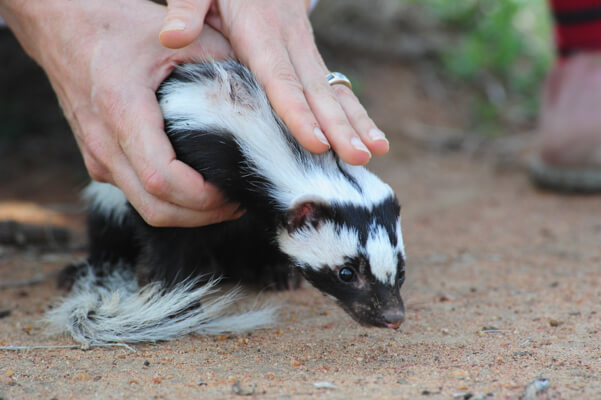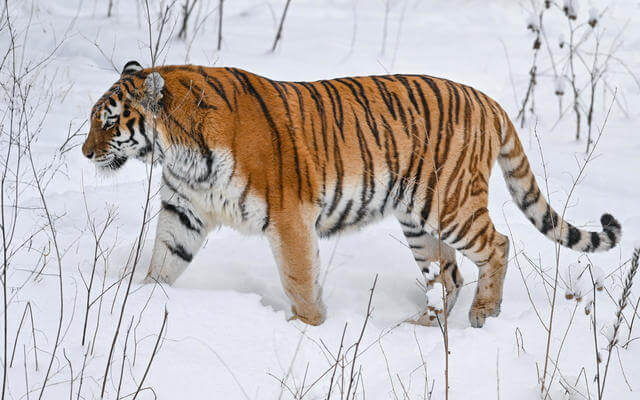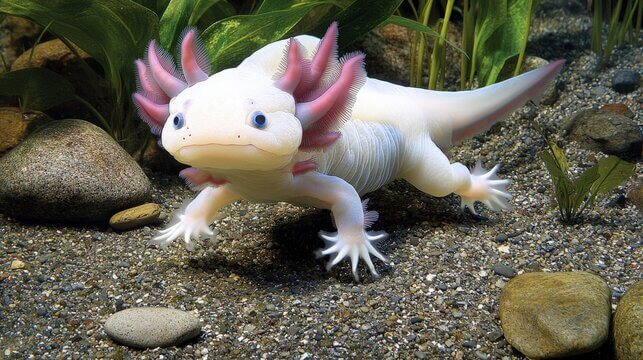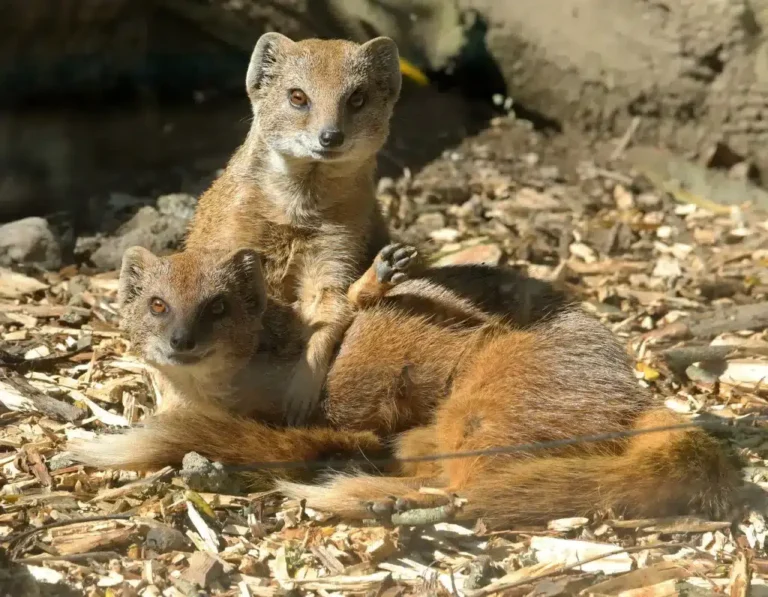Top Animals That Start With R: Facts, Habitats & Traits
Animals have always fascinated us with their diverse characteristics, intriguing behaviors, and unique adaptations. When it comes to animals that start with the letter “R,” a captivating list unfolds, showcasing a mix of well-known and lesser-known species from various parts of the world; these animals, ranging from the giant and iconic Rhinoceros to the nimble and rarely-seen Red Panda, each have their own story to tell. Understanding these animals enriches our knowledge and brings awareness to the beauty and importance of biodiversity.
Contents
- 1 Alphabetical List Of Animals That Start With R | animals beginning with r
- 2 Top 10 Famous Animals that Start with R | animal beginning with r
- 3 1. Rhinoceros
- 4 2. Red Panda
- 5 3. Rattlesnake
- 6 4. Raccoon
- 7 5. Reindeer (Caribou)
- 8 6. Ring-tailed Lemur
- 9 7. Rabbit
- 10 8. Rockhopper Penguin
- 11 9. Raven
- 12 10. Roseate Spoonbill
Alphabetical List Of Animals That Start With R | animals beginning with r

| Rabbit | Red-Bellied Black Snake | Rinkhals Snake |
| Raccoon | Red-Bellied Woodpecker | Risso’s Dolphin |
| Raccoon Dog | Red-Billed Quelea Bird | River Dolphin |
| Racer Snake | Red-Eared Slider | River Otter |
| Radiated Tortoise | Red-Eyed Tree Frog | River Turtle |
| Ragamuffin | Red-Footed Tortoise | Roadrunner |
| Ragdoll | Red-Handed Tamarin | Robber Fly |
| Raggle | Red-Headed Vulture | Robin |
| Rainbow Bee Eater | Red-Lipped Batfish | Roborovski Hamster |
| Rainbow Boa | Red-Shouldered Hawk | Rock Bass |
| Rainbow Grasshopper | Red-Tailed Cuckoo Bumblebee | Rock Crab |
| Rainbow Kribs | Red-Tailed Hawk | Rock Hyrax |
| Rainbow Lorikeet | Red-Winged Blackbird | Rock Python |
| Rainbow Shark | Redback Spider | Rockfish |
| Ram | Redbone Coonhound | Rockhopper Penguin |
| Rat | Redcap Chicken | Rodent |
| Rat Snake | Redear Sunfish | Roe Deer |
| Rat Terrier | Redhump Eartheater | Roosevelt Elk |
| Ratel | Redstart | Rooster |
| Rattlesnake | Redtail Catfish | Root Aphid |
| Raven | Reef Fish | Rose-Breasted Grosbeak |
| Ray | Reef Shark | Roseate Spoonbill |
| Red Ackie Monitor | Regal Jumping Spider | Rosy Boa |
| Red Aphid | Reindeer | Roti Island Snake-Necked Turtle |
| Red Back Jumping Spider | Repenomamus | Rotterman |
| Red British Squirrel | Reticulated Giraffe | Rottle |
| Red Deer | Reticulated Python | Rottsky |
| Red Diamondback Rattlesnake | Reverdin’s Blue Butterfly | Rottweiler |
| Red Drum Fish | Rex Rabbit | Rottweiler Mix |
| Red Finch | Rhamphosuchus | Rough Earth Snake |
| Red Fox | Rhea | Rough Green Snake |
| Red Kangaroo | Rhesus Macaque | Rough-Legged Buzzard |
| Red Kite | Rhino Beetle | Rough-Legged Hawk |
| Red Knee Tarantula | Rhino Viper | Rough-Toothed Dolphin |
| Red Knot | Rhinoceros | Round Island Burrowing Boa |
| Red Nose Pit Bull | Rhinoceros Beetle | Rove Beetle |
| Red Panda | Rhode Island Red Chicken | Royal Penguin |
| Red Paper Wasp | Rhodesian Ridgeback | Rubber Boa |
| Red Racer Snake | Rhombic Egg-Eater Snake | Ruby-Crowned Kinglet |
| Red Rock Crab | Ribbon Eel | Ruby-Throated Hummingbird |
| Red Spitting Cobra | Ribbon Snake | Rudd |
| Red Squirrel | Right Whale | Rudderfish |
| Red Star Chicken | Rim Rock Crowned Snake | Ruddy Duck |
| Red Tail Boa | Ring-Billed Gull | Ruddy Turnstone |
| Red Tanager | Ringed Kingfisher | Rufous Hummingbird |
| Red Tree Vole | Ringed Seal | Russel’s Viper |
| Red Wolf | Ringtail | Russell Terrier |
| Red-Backed Shrike | Ringtailed Lemur | Russian Bear Dog |
| Russian Blue | Russian Tortoise | animals with r |
This comprehensive guide will delve into the fascinating world of animals that begin with the letter “R.” We’ll explore their physical attributes, habitats, behaviors, conservation statuses, and other interesting facts that make them stand out. Whether you’re a wildlife enthusiast, a student, or simply curious about the animal kingdom, this detailed overview will provide valuable insights and deepen your appreciation for these remarkable creatures.
More animals that start with: A | B | C | D | E | F | G | H | I | J | K | L | M | N | O | P | Q | R | S | T | U | V | W | X | Y | Z
Top 10 Famous Animals that Start with R | animal beginning with r
Below, we list the top 10 famous animals, starting with the letter “R,” detailing their unique features, habitats, diets, and interesting facts. This information is derived from top sources’ latest data and research, ensuring accuracy and reliability.
1. Rhinoceros

- Scientific Name: Rhinocerotidae
- Habitat: Grasslands and savannas of Africa and Asia
- Physical Attributes: Rhinoceroses are characterized by their large size, thick skin, and one or two prominent horns on their snouts. They can weigh up to 2,500 kg.
- Diet: Herbivorous; primarily consumes grasses, shoots, leaves, and fruits.
- Conservation Status: Varies by species; some are critically endangered due to poaching for their horns and habitat loss.
- Interesting Fact: Rhinos have poor eyesight but an excellent sense of smell and hearing, helping them navigate their environment and detect predators.
2. Red Panda

- Scientific Name: Ailurus fulgens
- Habitat: Temperate forests in the Himalayas and southwestern China
- Physical Attributes: Small, reddish-brown fur, a bushy tail and a face resembling a raccoon. Adult Red Pandas weigh between 3 to 6 kg.
- Diet: Primarily bamboo, but also eats fruits, acorns, and small animals.
- Conservation Status: Endangered due to habitat fragmentation, poaching, and climate change.
- Interesting Fact: Despite their name, Red Pandas are more closely related to raccoons and skunks than the Giant Panda.
3. Rattlesnake

- Scientific Name: Crotalus spp.
- Habitat: Deserts, grasslands, and scrublands of the Americas, especially in the United States and Mexico.
- Physical Attributes: Known for their distinctive rattle at the end of their tails, which they use as a warning to predators. They have triangular heads and vertical pupils.
- Diet: Carnivorous; feeds on small mammals, birds, and reptiles.
- Conservation Status: Most species are not currently endangered, but habitat loss poses a threat.
- Interesting Fact: Rattlesnakes can control the amount of venom they inject based on their perceived threat level.
4. Raccoon

- Scientific Name: Procyon lotor
- Habitat: Forests, urban areas, and wetlands across North America.
- Physical Attributes: Grayish-brown fur with a distinctive “bandit” mask around their eyes and a ringed tail.
- Diet: Omnivorous; consumes fruits, nuts, insects, small animals, and human leftovers.
- Conservation Status: Least Concern, but human-wildlife conflict is a common issue.
- Interesting Fact: Raccoons are highly intelligent and have been known to solve complex puzzles. They are also adept swimmers and climbers.
5. Reindeer (Caribou)

- Scientific Name: Rangifer tarandus
- Habitat: Arctic, Subarctic, tundra, boreal, and mountainous regions.
- Physical Attributes: Medium to large-sized deer with dense fur and large antlers that both males and females can have.
- Diet: Herbivorous; feeds on grasses, lichens, mosses, and leaves.
- Conservation Status: Varies; some populations are vulnerable due to climate change and industrial development.
- Interesting Fact: Reindeer are the only deer species where both sexes grow antlers, which they use for defense and foraging in the snow.
6. Ring-tailed Lemur

- Scientific Name: Lemur catta
- Habitat: Madagascar, in dry forests and bushlands.
- Physical Attributes: Recognizable by their black and white ringed tail, which can be longer than their body.
- Diet: Primarily frugivorous, they eat leaves, flowers, and insects.
- Conservation Status: Endangered due to habitat destruction and hunting.
- Interesting Fact: Ring-tailed lemurs are highly social and use their tails for communication, especially during group movements.
7. Rabbit

- Scientific Name: Oryctolagus cuniculus (European Rabbit)
- Habitat: Various habitats worldwide, including forests, grasslands, deserts, and urban areas.
- Physical Attributes: Small mammals with long ears, large hind legs, and soft fur. Rabbits are known for their powerful hind legs and rapid reproductive rate.
- Diet: Herbivorous; mainly grasses, leaves, and vegetables.
- Conservation Status: Domesticated and wild populations vary; some are invasive in non-native areas.
- Interesting Fact: A female rabbit can produce up to 30 offspring per year under optimal conditions.
8. Rockhopper Penguin

- Scientific Name: Eudyptes chrysocome
- Habitat: Subantarctic islands in the Southern Hemisphere.
- Physical Attributes: Small penguins with distinctive yellow feathers extending from above their eyes, giving them a “punk” appearance.
- Diet: Carnivorous; feeds on krill, squid, and small fish.
- Conservation Status: Vulnerable due to climate change and fishing activities.
- Interesting Fact: Rockhopper Penguins are named for their habit of hopping over rocks and crevices when moving on land.
9. Raven
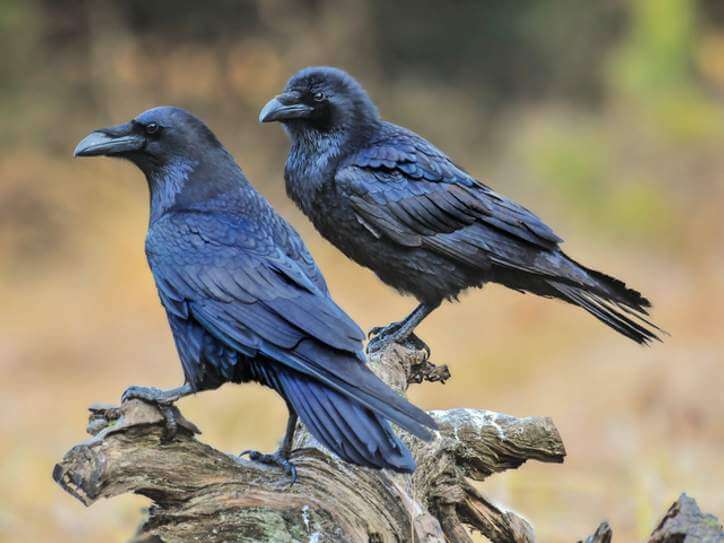
- Scientific Name: Corvus corax
- Habitat: Widely distributed across the Northern Hemisphere in various habitats, including forests, mountains, and urban areas.
- Physical Attributes: Large black birds with iridescent feathers and strong beaks.
- Diet: Omnivorous; feeds on carrion, small animals, nuts, and grains.
- Conservation Status: Least Concern, adaptable to human environments.
- Interesting Fact: Ravens are among the most intelligent birds and have been observed using tools and problem-solving skills.
10. Roseate Spoonbill

- Scientific Name: Platalea ajaja
- Habitat: Wetlands in South America, Central America, the Caribbean, and the southeastern United States.
- Physical Attributes: Large wading bird with pink plumage and a distinctive spoon-shaped bill.
- Diet: Carnivorous; sifts through mud for fish, crustaceans, and insects.
- Conservation Status: Least Concern but threatened by habitat destruction.
- Interesting Fact: The pink coloration in their feathers comes from carotenoids in their diet, similar to flamingos.
Conclusion
Animals that start with the letter “R” showcase the incredible diversity of the animal kingdom. Each of these creatures plays a vital role in their respective ecosystems, from the majestic Rhinoceros to the vibrant Roseate Spoonbill. Understanding and appreciating these animals is crucial for their conservation and fostering a deeper connection with the natural world. By learning about these animals’ unique features, habitats, and behaviors, we enrich our knowledge and take a step toward advocating for protecting our planet’s precious wildlife.
- Golden Retriever Pros and Cons: What Every Pet Parent Should Know - 15 September 2025
- Cane Corso Dog Breed: Health, Care, and Lifespan - 14 September 2025
- Catahoula Leopard Dogs: Description, Temperament, Lifespan, & Facts - 21 July 2025



